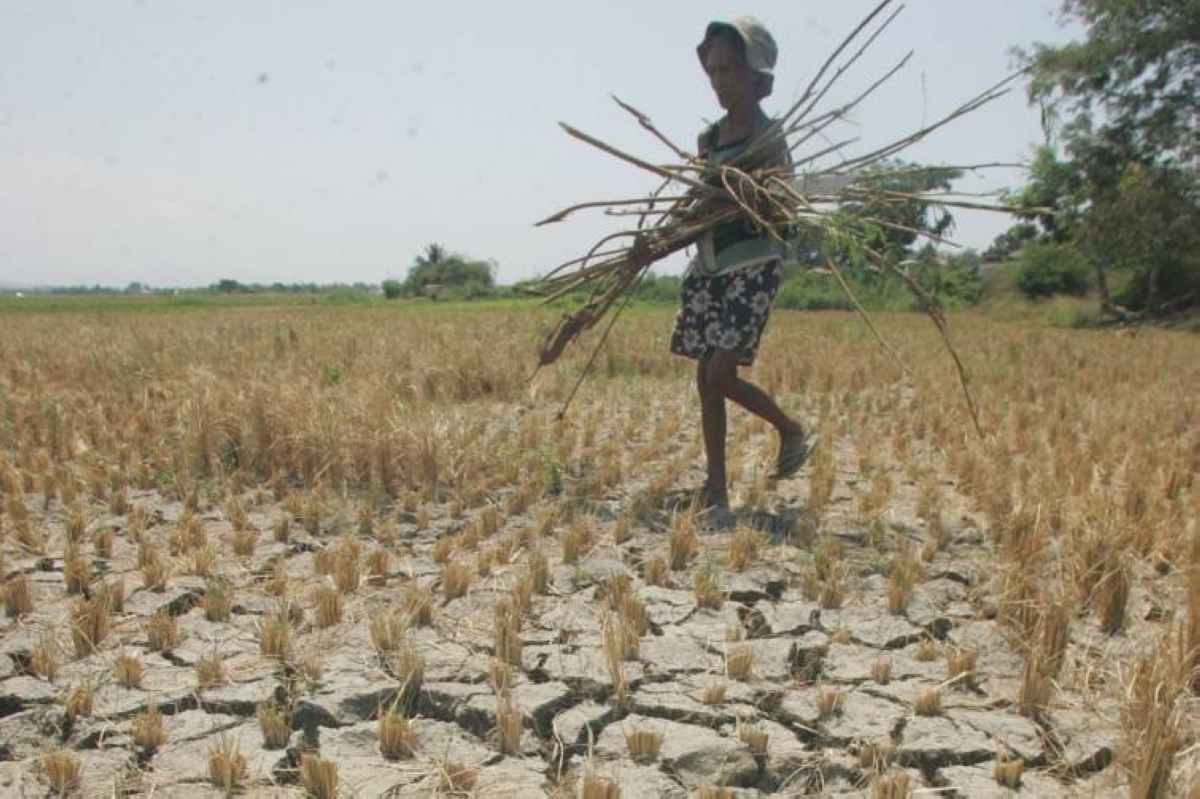The Heatwave in the Philippines: Ilocos Norte, Cagayan, and Pangasinan
The provinces of Ilocos Norte, Cagayan, and Pangasinan in the Philippines are expected to experience scorching temperatures with a “dangerous” heat index ranging from 45 to 47 degrees Celsius, according to the Philippine Atmospheric, Geophysical, and Astronomical Services Administration (PAGASA). This announcement was made on Monday, highlighting the severity of the heatwave in these regions.
As for the National Capital Region, residents can expect to endure temperatures as high as 43 degrees Celsius until Tuesday, based on PAGASA’s two-day forecast. Robert Badrina, a weather specialist, shared this information, emphasizing the extreme heat that will be felt in the capital.
Furthermore, both Metro Manila and Tuguegarao City are projected to reach a maximum temperature of 35 degrees Celsius for the day, as reported by the weather bureau. These soaring temperatures are a result of the prevailing easterlies, which are warm winds blowing from the east.
Despite the scorching heat, PAGASA predicts that most areas will experience another hot day, with the exception of isolated rain showers and thunderstorms expected to occur late in the afternoon or at night. This pattern is due to the influence of the easterlies, which bring warm and humid air to the Philippines.
Monitoring for Tropical Cyclones
Last week, PAGASA initially warned that a tropical cyclone might enter the Philippine area of responsibility within the week. However, the latest analysis from PAGASA indicates that no storm is expected to develop. This update was confirmed by PAGASA Administrator Nathaniel Servando in a communication with The Manila Times via Viber.
It is crucial for PAGASA to closely monitor the development of tropical cyclones as these weather disturbances can bring heavy rains, strong winds, and other potential hazards. By providing timely updates and forecasts, PAGASA helps ensure the safety and well-being of the Filipino population.
Understanding the Heat Index and Its Impact
The heat index is a measure of how hot it feels when relative humidity is factored in with the actual air temperature. It is an important indicator to consider as it helps determine the level of discomfort and potential health risks posed by extreme heat. When the heat index reaches “dangerous” levels, as forecasted in Ilocos Norte, Cagayan, and Pangasinan, it is crucial for individuals to take necessary precautions to protect themselves from heat-related illnesses.
Extreme heat can have various adverse effects on the human body, including heat cramps, heat exhaustion, and heatstroke. It can also exacerbate existing health conditions, such as respiratory and cardiovascular diseases. Therefore, it is essential for people residing in areas affected by the heatwave to stay hydrated, avoid prolonged exposure to the sun, and seek shelter in cool and shaded areas whenever possible.
Local authorities and communities should also take proactive measures to mitigate the impact of the heatwave. This can include setting up cooling centers, providing access to clean drinking water, and disseminating information on heat safety measures to the public. By working together, the adverse effects of extreme heat can be minimized, ensuring the well-being of the population.
Local Laws and Customs to Combat Extreme Heat
Given the unique climate and geographical conditions of the Philippines, it is important to consider local laws and customs when dealing with extreme heat. The country experiences a tropical climate, characterized by high temperatures and humidity throughout the year. As a result, the government and local communities have implemented measures to cope with the challenges posed by extreme heat.
For instance, some local ordinances require employers to provide appropriate working conditions for their employees during periods of extreme heat. This may include flexible working hours, access to drinking water, and breaks in shaded or air-conditioned areas. These measures aim to protect workers from heat-related illnesses and ensure their safety and well-being.
In addition, local customs and practices play a significant role in adapting to extreme heat. Filipinos have developed various strategies to cope with the hot weather, such as wearing light and breathable clothing, using fans or electric fans for ventilation, and consuming refreshing beverages like halo-halo or sago’t gulaman. These practices reflect the resilience and resourcefulness of the Filipino people in dealing with challenging weather conditions.
Conclusion
The heatwave affecting the provinces of Ilocos Norte, Cagayan, and Pangasinan, as well as the National Capital Region, underscores the importance of being prepared and informed about extreme weather conditions. PAGASA’s forecasts and updates serve as valuable tools in ensuring the safety and well-being of the Filipino population.
By understanding the heat index and its impact, individuals can take appropriate measures to protect themselves from heat-related illnesses. Local authorities and communities should also collaborate in implementing strategies to mitigate the effects of extreme heat, considering both local laws and customs.
As the Philippines continues to experience the challenges posed by extreme weather events, it is crucial to prioritize the safety and resilience of communities. Through proactive measures and a collective effort, the country can effectively adapt and respond to the impacts of climate change, ensuring a safer and more sustainable future for all.







